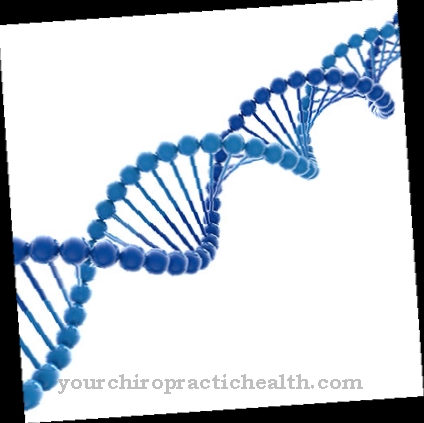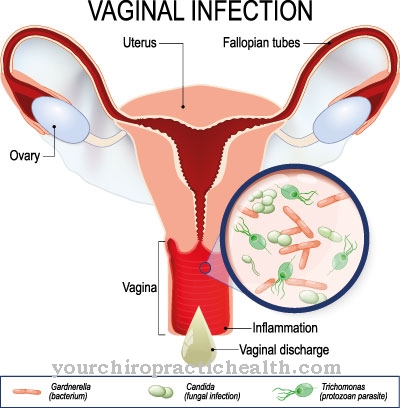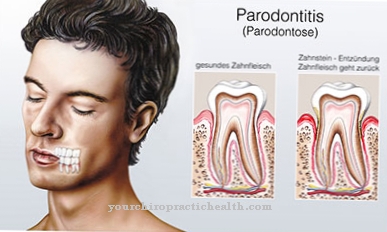The term APC resistance or Factor V Leiden Mutation describes a mostly genetic blood clotting disorder (thrombophilia) that is responsible for the formation of venous thromboses. This genetic defect is passed on from parents to boys and girls alike. In the case of APC resistance, an imbalance in the blood coagulation factors results in an increased risk of venous blood clots (thrombosis).
What is APC Resistance?

The extremely complex human blood coagulation system, which was disturbed by the APC resistance (APC stands for activated protein C), which was discovered in 1993, closes and heals open wounds and injuries to small blood vessels by activating a network of protein threads.
This protein, known as “fibrin”, forms the basic structure of the blood clot, which closes the wound. The “fibrinolytic system”, which works in parallel with this coagulation system and also with substances containing protein, has the task of dissolving the blood clots and transporting them away.
While these two systems have a balanced relationship in healthy people and blood coagulation only begins where it is needed (namely to seal off injured blood vessels), the fibrinolytic system in the case of APC resistance is not able to reduce the "blood coagulation factor V" to split.
Thus, with APC resistance, there is no balance between blood clotting, which is normal, and its resolution, which is too low.
causes
The causes of APC resistance are mostly of genetic origin, i.e. inherited.
The cleavage of blood coagulation factor V by APC normally takes place at precisely defined locations in the human body. People who, due to a changed genetic material (mutation), have a factor V that has also changed in its structure, thus suffer from inherited APC resistance.
The most common form of inheritance is “Factor V Leiden” (named after the Dutch city of the same name), which prevents the clot from being broken down and removed by activated protein C, resulting in APC resistance.
In addition to other genetically determined causes of APC resistance related to the V factor, acquired, i.e. non-inherited forms of this disease are known, for example through the use of the birth control pill (especially newer preparations), through various hormone replacement therapies, but also through the Smoking and surgery.
Symptoms, ailments & signs
APC resistance can lead to serious complaints and symptoms. For this reason, it should always be treated by a doctor in order to avoid further complications and a reduced life expectancy for the person concerned. As a rule, those affected suffer from a significantly increased risk of thrombosis.
This is also associated with severe pain in the legs, which can occur not only under load but also in the form of pain at rest. They also spread to the neighboring areas of the body and can lead to sleep problems at night and thus to depression or irritation in the person concerned. Furthermore, embolisms can also occur due to the APC resistance.
The patients are at a very high risk of heart attack or stroke. For this reason, you need regular examinations to minimize this risk. Furthermore, the APC resistance can also lead to psychological complaints, which can occur not only in the patient himself, but also in the relatives or the children.
A possible stroke can lead to permanent paralysis or damage to organs that can no longer be treated. In most cases, this will reduce the person's life expectancy.
Diagnosis & course
The diagnosis of APC resistance is nowadays carried out using a blood sample taken from the vein, which proves possible APC resistance (also in patients who take blood-thinning medication or who also suffer from another type of disorder of the coagulation system) with almost 100% certainty.
A gene mutation responsible for the development of factor V Leiden can also be determined by a simple blood sample. Due to the imbalance between the functioning blood coagulation and the insufficient breakdown of the clots, more thromboses form in the case of APC resistance, and the tendency to thrombophilia increases.
The "deep vein thrombosis", which usually occurs in the leg veins, is particularly common in APC resistance and carries a high risk potential for an often fatal pulmonary embolism. The less common but equally dangerous effects of APC resistance are the thromboses that occur in the area of the cerebral veins.
Complications
APC resistance increases the risk of thrombosis and blood clots. The deep veins in the legs are particularly predisposed. If a thrombus now forms in the area of the leg veins, this prevents the blood from flowing further back to the heart. As a result, the blood backs up and typical varicose veins form.
These can become inflamed over time and ulcers can develop in the lower extremities, especially in the area of the lower leg and ankles (ulcus cruris). A dreaded complication of thrombosis is loosening from the vessel wall and being carried away with the bloodstream. This causes the blood clot to enter the heart, whereupon it is pumped into the pulmonary arteries.
This can lead to an occlusion, i.e. a pulmonary embolism. The affected person is characterized by severe shortness of breath and chest pain. In addition, the pressure in the right heart can increase, which can lead to a heart attack. Furthermore, fluid can escape from the pulmonary arteries, causing pulmonary edema, which further worsens the symptoms.
However, the blood clot can also be carried off into the cerebral vessels next to the lungs and thus trigger a stroke. The affected person mostly suffers from sensorimotor paralysis of his extremities. In addition, there can also be speech loss and incontinence.
When should you go to the doctor?
In many cases, APC resistance does not have characteristic or special symptoms that would speak for this disease. For this reason, diagnosis is usually made late. However, a doctor should be consulted if the APC resistance causes pain in the legs. These pains usually also occur in the form of resting pains and can often lead to sleep problems.
Persistent leg pain is unusual, especially in children, and should always be checked by a doctor. An increased risk of stroke can also indicate APC resistance. In any case, a doctor must be consulted if a heart attack should actually occur. In this case, however, the emergency doctor should be called directly. The formation of varicose veins can also indicate APC resistance. These must also be treated and examined. As the disease progresses, there are also lung problems. If the person concerned should therefore suffer from breathing difficulties for no particular reason, a doctor must also be consulted.
Doctors & therapists in your area
Treatment & Therapy
To date, there are no treatment methods available for combating the cause of APC resistance. Occurring venous thrombosis or pulmonary embolism are treated with common drugs (for example with heparins or phenprocoumon) - regardless of whether the cause is APC resistance.
The medication administered inhibits blood clotting to a certain extent (depending on the severity of the case). This form of treatment, also known as “oral anticoagulation”, takes place over a period of three to six months (depending on the situation and extent of the disease). If there is a very high risk of thrombosis, long-term therapy can also be used.
There is also the possibility of reducing the risk of thrombosis through prophylactic (preventive) measures, such as a heparin injection, in the case of known risk factors such as obesity, an upcoming flight or surgery, but also in the context of a pregnancy with existing blood coagulation defects.
In around 30 percent of people between the ages of 20 and 40, APC resistance is responsible for the occurrence of thromboses, with it being estimated that between five and eight percent of the total population are affected by APC resistance.
Outlook & forecast
Since APC resistance (factor V disease) is a genetic defect, it cannot be treated in principle. This genetic defect can increase the risk of developing thromboses moderately (five to ten times as high) in heterozygous factor V disease and considerably (50 to 100 times as high) in homozygous factor V disease. This means that the risk is significantly higher if the hereditary trait for APC resistance was inherited from both parents and not just from one parent.
However, if APC resistance is detected early on, the risk of thrombosis can be significantly reduced by adjusting the lifestyle. These include, among other things, weight reduction or renouncing nicotine. Women should also find out about alternatives to hormonal contraception.
A healthy diet and exercise are also helpful in preventing thrombosis. If a thrombosis nevertheless occurs, the prognosis is good with rapid blood thinning with medication. However, thrombosis occurs repeatedly in people with APC resistance. The prognosis must also be based on where a thrombus develops. If the blood builds up in the leg, varicose veins usually develop in the patient, which, in the worst case, can become infected and lead to ulcers in the lower extremities.
However, it is also possible that a blood clot could enter the heart and then the lungs. The result is a pulmonary embolism. Heart attacks cannot be ruled out either. If a clot is carried over into the cerebral vessels, it can also lead to a stroke. It is therefore important to keep the risk of thrombosis as low as possible and to treat any occurring thrombosis as quickly as possible in order to positively influence the course of the disease.
prevention
Since APC resistance is usually genetically determined and can therefore hardly be avoided, preventive care should be taken to keep the risk of thrombosis as low as possible. Refraining from cigarettes, hormonal contraceptives and hormone preparations, as well as drug prophylaxis in the case of imminent surgery, reduce the risk of thrombosis caused by APC resistance.
Aftercare
Since APC resistance is a genetic disease that cannot be treated causally but only symptomatically, there are no direct options for follow-up care. A complete cure is also not possible with this disease, so that the person affected is dependent on lifelong therapy. If the person affected by APC resistance wishes to have children, genetic counseling can be useful in order to prevent possible inheritance to the descendants.
The disease is usually treated with medication. It is important to ensure that the medication is taken regularly. Interactions with other drugs should also be considered and of course avoided. Consult a doctor here. Since the risk of thrombosis increases significantly due to the APC resistance, regular examinations should be carried out in order to avoid these symptoms.
Obesity should also be avoided as far as possible, whereby a healthy lifestyle with a healthy diet has a very positive effect on the further course of the disease. If APC resistance is detected during pregnancy, treatment is also necessary. In some cases the life expectancy of the person affected is reduced by the APC resistance
You can do that yourself
APC resistance, also known as the Factor V Leiden mutation, is a typical example of a genetic disease in which the implicit risks can be reduced by adapting behavior in everyday life and by taking self-help measures. The disease caused by a gene mutation leads to an increased tendency to form blood clots (thrombi). The increased tendency of the blood to clot may even be helpful in the event of injuries, but it also increases the risk of causing thrombosis or embolism.
Because it is a genetic defect, the cause of APC resistance cannot be treated. There is only the possibility of reducing the tendency of the blood to clot by using anticoagulants. If the disease is discovered by chance or after suffering from a thrombosis, the risk can be reduced by adjusting behavior in everyday life.
Long periods of sitting should be interrupted by standing up, walking around, and possibly a little exercise. For example, a normal weight has a positive effect on being overweight, as is abstinence from tobacco smoking. Exercise that does not require extreme performance, but strengthens the cardiovascular system and promotes well-being, has a preventive effect against thrombosis, heart attack and stroke.
In terms of preventive self-help measures, a healthy diet, which largely contains natural foods, is important. Above all, care should be taken to ensure a sufficient basic supply of vitamins, minerals, trace elements and other secondary ingredients. In this context, a balanced ratio between omega-6 and omega-3 fatty acids of less than 5: 1 is also helpful.


.jpg)



.jpg)




















